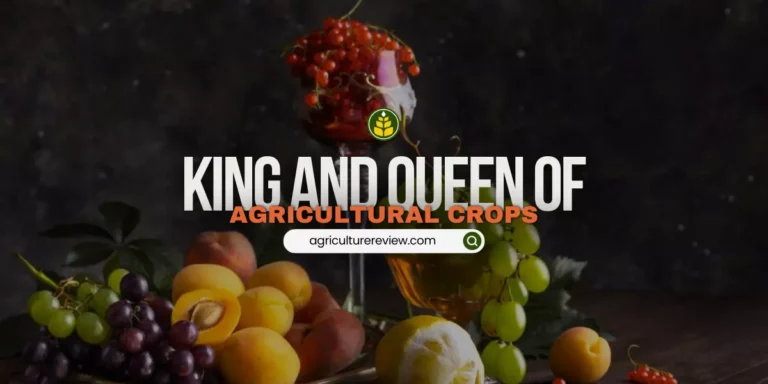Definition: Dryland farming or dry farming is a farming technique in which farmers cultivate crops that are drought tolerant and practice water harvesting in arid to semi-arid regions. In these regions there is scarcity of natural water sources.
According to FAO (Food & Agricultural Organization), 45% of the world’s total land area is dryland. Every year arid and semi-arid regions faces drought, soil salinity increases, hence farming becomes very difficult in these areas.
That’s why, there is necessity of developing technologies so that farmers living in these areas become capable of increasing yield economically and ecologically. Therefore main focus is on selection of crops, soil moisture retention, water harvesting, and other cultural practices.
Table of Contents
Types Of Dryland Farming
On the basis of amount of rainfall annually we can broadly classify dryland agriculture into three categories:
- Dry Farming: Practicing farming in arid regions where annual rainfall is less than 750 mm is dry farming. Cropping period or growing period is only about 75 days and there is high risk of crop failure.
- Dryland Farming: Practicing farming in semi-arid regions where annual rainfall is more than 750 mm but less than 1150 mm. Growing period is about 75 to 120 days and risk of crop failure is low.
- Rainfed Farming: Practicing farming in areas where annual rainfall is more than 1150 mm comes under rainfed farming practices. In these areas cropping period is more than 120 days and crop failure is relatively less.
Due to uneven rainfall, occurrence of drought or flood, undulating soil surface, etc. create lot of problems in crop cultivation. Moreover due to lack of knowledge farmers living in arid to semi-arid regions practice mono-cropping. Due to which there is continuous loss of nutrients from the soil and it also promotes soil erosion.
Therefore to maintain productivity, we need to focus on soil and water conservation methods.
Soil & Water Conservation Methods
If you are a farmer and you follow these management practices, then you will be able to get higher yield and reduce soil health deterioration as well.
Management Practices
Strip Cropping: So here is the concept, there are crops that are erosion permitting and erosion resisting crops. Crops such as cotton, jawar, bajra, etc. are erosion permitting crops that you can cultivate along with erosion resisting legume crops such as ground nut, soybean, mung bean, etc. by following strip cropping method.
Mulching: You can use crop residue, paddy straw, husk or plastic for mulching. It helps in soil water retention and maintaining soil temperature. Mulching also help in reducing impact of water and air on soil due to which soil erosion reduces.

Rotation Cropping: If you cultivate same crop in your farm again and again then it accelerates rate of soil erosion. Therefore you need to cultivate different crop sequentially on your farm. This will help in improving soil health, nutrient cycle, and reducing weeds, diseases and pests.
Planting legume crops after cereal crops helps in reducing impact of erosion and improving soil health.
Contour Cultivation: Practice tillage operations such as ploughing, harrowing, sowing, and inter-culture operations across slope of the land. This will create barrier for water flow across every end, hence water distribution will be even and infiltration will increase. It also help in reducing surface runoff hence reducing erosion of soil by water.
Grass Plantation On Bunds: Bunds remain untouched, hence you can cultivate grasses such as Napier grass on bunds to reduce soil erosion. Planting grasses on bunds will also help in providing food for cattle.
Agroforestry: Practicing agroforestry has multiple benefits, it ensures extra income to farmers. Planting nitrogen fixing trees such as Black Locust, Mimosa, Alder, Redbud, Autumn Olive, Kentucky Coffee Tree, etc. helps in increasing nitrogen in soil which benefits agricultural crops.
Water Use Efficiency: Follow rainwater harvesting irrigation, alternate furrow or partial root zone irrigation methods in dryland farming conditions. This help in increasing water use efficiency, hence by using less amount of water you will be able to get optimum yield.
Although initial setup cost of drip irrigation is high, but it gives long term solution.
Deep rooted trees bind the soil tightly and tall canopy reduces impact of wind, hence prevents soil erosion.
Along with these practices you can also implement Zero Budget Natural Farming methods in your farm. This farming method not only helps in improving soil health & productivity but it also reduce need of external farming inputs such as fertilizers and pesticides in dryland farming condition.
Mechanical Practices
If you want to reduce surface runoff and water loss for longer time then you can try mechanical practices in your farm. However, these mechanical practices are costly and requires engineering skills and structure construction but gives long term solution.
Contour Bunding: Construct series of earthen bunds of suitable sizes along contours at a lateral distance of every 60mm. It helps in retention of water and reduction in surface runoff. Size, cross section and spacing of interbunds depend on soil, rainfall, & slope of the area.
Graded Bunding: In some dryland areas there is existence of high intensity rainfall in a particular season every year. In such reason graded bunding plays a vital role in preventing soil erosion as well as avoiding waterlogging in the farm. Construct slightly graded longitudinally bunds about 7.5 cm. per running 33 metres.
Also construct waste water outlet structures at required distance to remove excess water during heavy rains.
Gully Or Nala Control: On sloping sides plant grasses and trees, or permanent structures such as check dams, overflow dams, drop structures to prevent soil erosion. This is essential as ignoring this factor alone can result in serious destruction of farming land.
Arid and semi-arid regions receive low rainfall annually, hence construction of water harvesting structures such as ponds, pits, check dams, percolation tanks, etc. plays a vital role in ensuring water availability to crops and animals throughout the year.
Author’s Note
If you are living in arid or semi-arid regions and willing to cultivate crops then I hope this article will be insightful for you. If you need any help regarding dryland farming then leave your query by commenting below!





I’m 41 yrs old, farm credit has turned me away on any type of ownership loans. They refused to talk to me about young farmer loans, new farmer loans or usda loans. My family sold the farm back in February. I’ve only ever been offered small conventional consumer loans for $10,000. I’m made complaints to farm credit administration. They see nothing wrong with the discrimination. I’m out of business & about 3 days from killing myself.
Hi Joshua,
I am really saddened to see what you are going through, Kindly tell me which loan type you applied for and from which organization so that I can assist you properly!